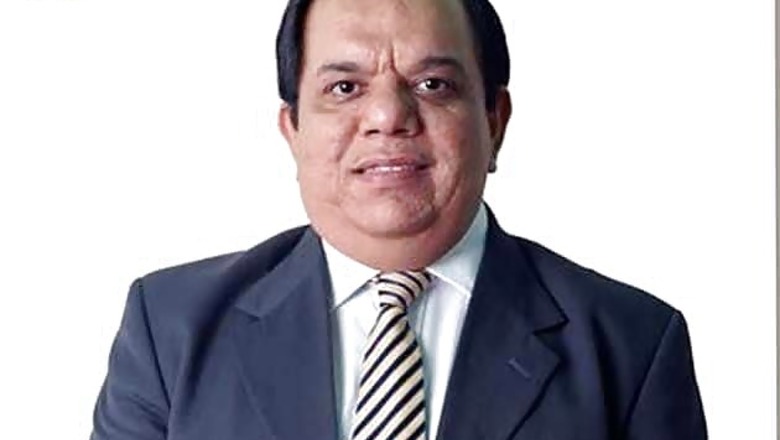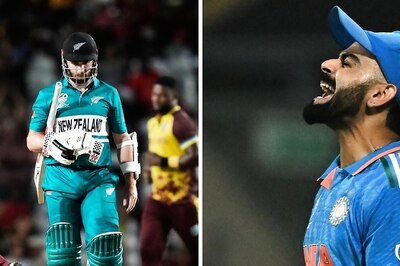
views
With the ICC World Cup 2015 at its semi-final stage, the excitement is at its peak. Watching cricket is always exciting, and now with the help of technology (mainly analytics) the interest quotient of this popular sport has gone up exponentially. High definition telecasts, data visualisation have really made cricket exciting to watch nowadays. Since both cricket and analytics are hot topics today, Firstpost reached out to one of the most respected and popular tech savant Vijay Sethi, who is VP and CIO at Hero MotoCorp Ltd, to understand how he sees his favourite game today that comes with a generous dose of analytics. Excerpts from the interview:
How does insightful information delivered through excellent data visualisation help you appreciate and understand cricket better?
When it comes to technology, Cricket can be compared with corporate. In corporate, we started with EDP (electronic data processing), MIS (management information systems), data warehousing, analytics, and now data visualisation. Similarly, in cricket we had basic stuff. For instance, how many centuries a certain player has made. Whereas today, it is all about visual. It's all about real-time visual rendering of data. So, if someone has scored a four, we can actually see it on wagon wheel that this guy is scoring on this side and so on. There are tons of examples of visual analytics being applied today in cricket.
The impact that visualisation or visual analytics has on viewers is way beyond what normal data warehousing or intelligence reports has. When as a spectator, I am watching this entire thing on TV or field with big screens out there, I feel very happy. The data is done real time, the entire churning is happening somewhere and the thought process is such that in entire two-three seconds that entire thing is rendered back to the user. As a technology person when I think of the entire technical aspect, it's a technological marvel.
Do you see a great use of analytics in fields like sports which were once just about mere ability and talent? Do you see this levelling the playing field for sportspersons so that even those not extremely talented can use these insights to work on specific areas?
One needs to have basic skills. Just by reading on Internet and doing data visualisation analysis, no one can become a good batsman or bowler. Ability and talent is extremely important, technology is the next step that helps players refine their skills further. Technology cannot be a starting point. First and foremost, you need to be a good player to even understand the nuances and the detailed analysis.
How do analytics help improve sports management and ensure that while sports is fun, it can be good business for owners and others and thus widen its reach and scope.
Analytics means good business, and that is quite evident when we look at IPL (Indian Premier League). In IPL, when owners are actually putting up auction for any player, they use technology to analyse each and every aspect. They use technology to review the combination of their own teams like which player comes with which weaknesses and who could be the other player who could complement that, and that's where technology is playing a big role in even defining teams. With cut-throat competition, technology is playing a huge role in shaping up strategies of each and every individual and team.
How do you see analytics transforming your industry and company?
We at Hero MotoCorp bet big on technology. For instance, Navratri has just started. For any automotive company, this is the period when we report maximum sales. We have technologically enabled each and every selling point, which means just by sitting at our Delhi office, we can track sales of our vehicles and not just by numbers but also by colours. This helps up plan our inventory accordingly.
In addition, one of our warehouse went live in a village in Rajasthan recently, which is Asia's most IT-enabled warehouse of any company and of any industry. The amount of technology used in that warehouse is so huge that it transforms the way warehousing is done in India.
What do you see as use cases for social sentiment analysis and predictive analysis?
We do lot of social sentiment analysis. Based on whatever campaigns we run, what is the analysis of that, how people have to see. So, we have listed lot of KPIs (key performance indicators) that this is what we want, and then we do full analysis of social media, social data to work on those particular thing.
How does data visualisation and dashboards help your top management?
Earlier, the top management used to see graphs, detailed charts to understand the situation. Today, the entire absorption of that data has become really easy with data visualisation tools. Earlier, while looking at so many layers of charts, you can't really relate beyond a point, but today with these tools the decision making process has become much faster and easier.


















Comments
0 comment